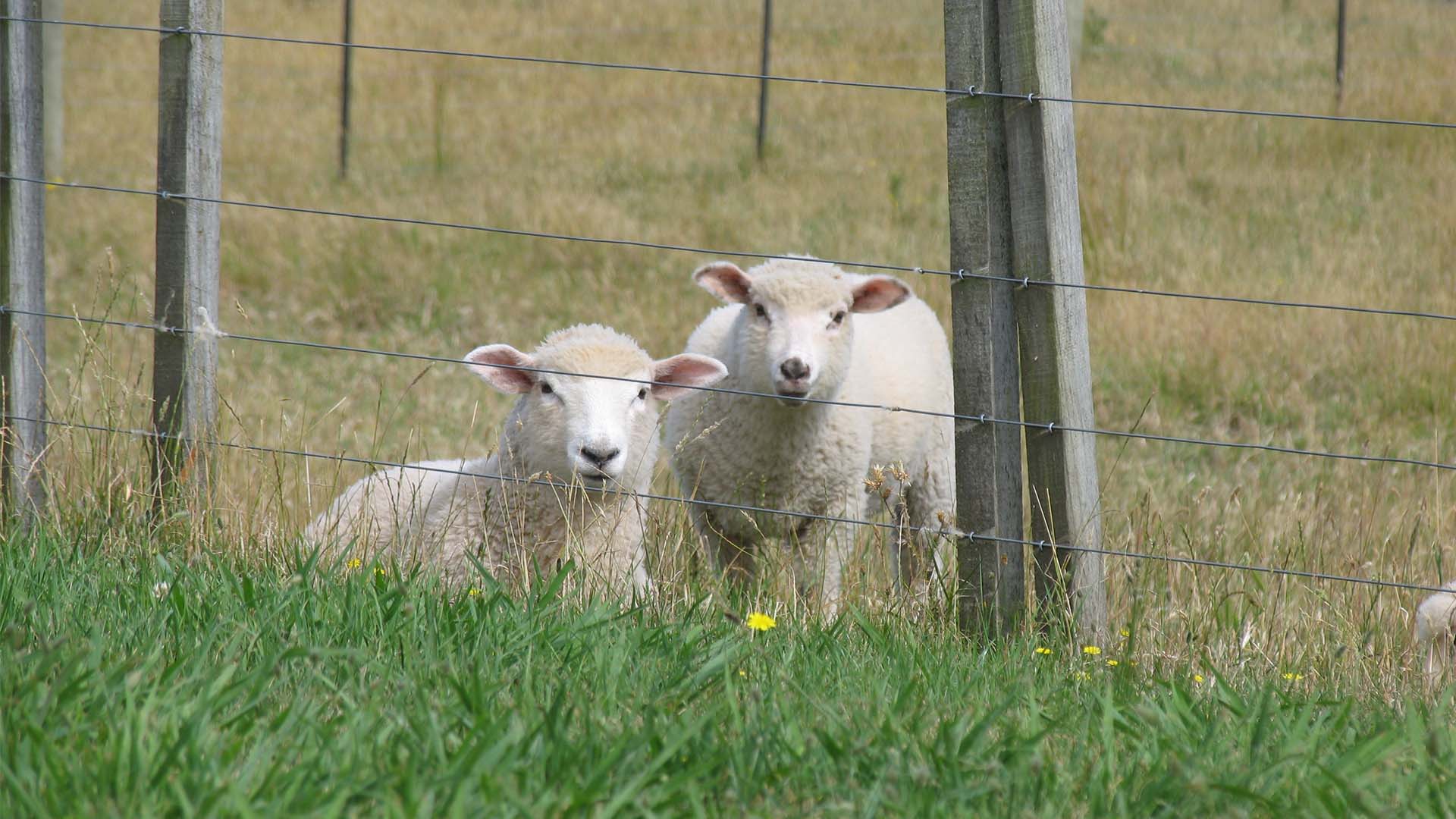
Is your horse pasture looking a little barren in spots, and overgrown in others? You may have a case of the "lawns and ruffs." This term refers to what happens to a pasture when horses are left to their own devices and graze where they want. Selective grazing leads to areas of short, new growth that are continuously overgrazed. In other areas, forage becomes over-mature and unpalatable, sometimes referred to as "rank."
State of the Pasture
Why are a majority of horse pastures in such dire shape? Well, it's due to a variety of factors. While overgrazing is partly to blame, the reality is many pastures are simply overstocked.
Horses' grazing and natural behaviors combined with the continuous grazing management practiced by most horse owners set the perfect stage for overgrazing. Rotational grazing methods are an effective way to overcome these challenges and create healthier pastures.
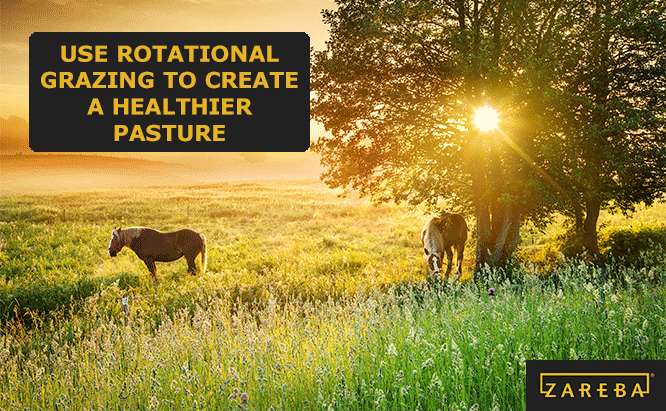
What is Rotational Grazing?
Rotational grazing is a form of managed or controlled grazing that involves subdividing larger paddocks and moving animals to new forage frequently. This form of grazing can be beneficial to horse farms, especially on small acreages, by improving pasture health, increasing forage production, and in some cases, extending forage supply.
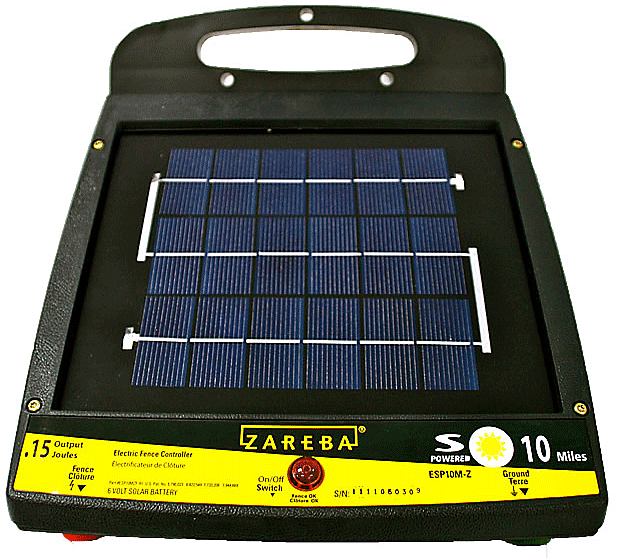
Pastures can be easily subdivided using temporary fencing products. Here is a list of what you will need:
- Step-in posts – These easy-to-install and easy-to-remove step-in posts are a great asset to anyone using rotational grazing. Just push them into the ground, thread your poly fencing through the slots and you’re ready to go.
- Poly wire, Poly rope or Poly Tape – When it comes to setting up the wire for your rotational grazing system, any of the poly fencing options make sense – they are all great to use as temporary fencing. Your options are poly wire, poly rope, or poly tape -- all of which help horses with their highly-visible designs. They also help you with their simple post-threading procedure and easy takedown.
- Solar charger – By investing in a solar-powered fence charger, you will get the mobility you need to truly begin rotational grazing. With a solar charger, temporary fencing can be erected anywhere on your property. You won’t need an electrical outlet or have to haul heavy batteries from paddock to paddock.
- Ground Rods – Your best bet is to pre-install grounding systems in multiple locations to accommodate all your rotational grazing locations. Once those are in place, you can set up your charger and fencing in just a few minutes.
- Lightning Protection – Since your charger is going to be left in the open while connected to thousands of feet of fencing, a lightning protection system is invaluable.
Time allowed for grazing each subdivided paddock will vary from a few days depending on stocking rate and rate of forage growth. While these smaller paddocks will lead to higher stocking rates, the rest period provided from moving animals frequently will help to extend the grazing season. In addition, grazing becomes more uniform as horses do not spend long periods grazing the same areas.
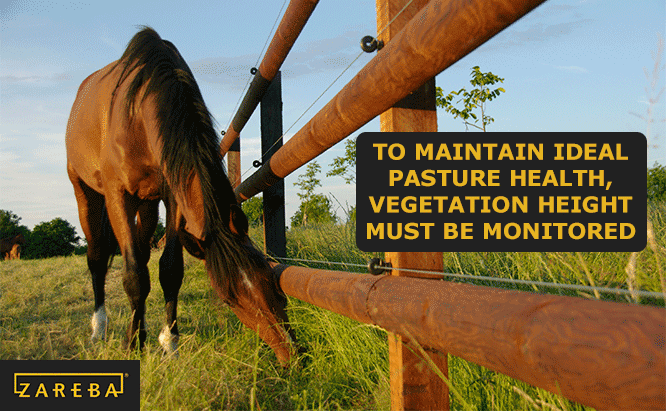
Rules of Rotational Grazing for Horses
To manage your rotational grazing system, pastures should not be grazed below 4-6 inches for warm-season grasses (e.g. bermudagrass) and 2-4 inches for cool season grasses (e.g. orchardgrass). Leaving plant material behind after each grazing period ensures plants have adequate leaf area to photosynthesize nutrients for regrowth.
Fencing, water systems, and paddock sizes will vary with pasture size and the number of horses you have. It's important to remember that this style of grazing may not be for everyone. Rotational grazing requires more intensive management and a keen eye paying attention to both horses and the forage they are grazing.
The Natural Resources Conservation Service, part of the USDA, offers this guide on the number of days of grazing each of your fields can expect in a rotation.
| Number of Pasture Fields | Grazing Days per Field |
|---|---|
| 2 | 20 to 40 days |
| 3 | 10 to 20 days |
| 4 | 7 to 13 days |
| 5 | 5 to 10 days |
| 6 | 4 to 8 days |
| 7 | 4 to 7 days |
| 8 | 3 to 6 days |
| 9 | 3 to 5 days |
| 10, 11, or 12 | 2 to 4 days |
| 13 or more | 2 to 3 days |
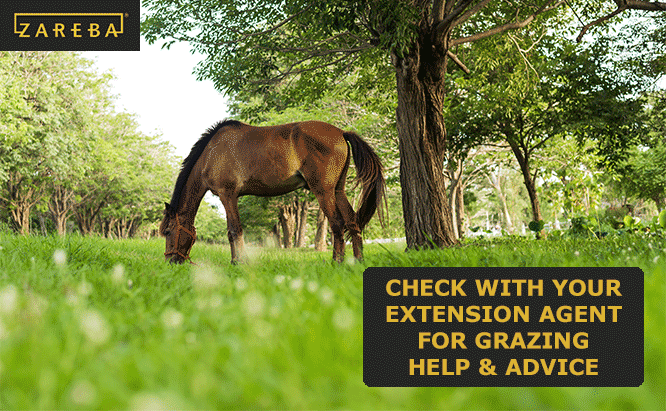
Get Help with Rotational Grazing
Horse owners interested in learning more about rotational grazing or other managed grazing methods should consult their local university extension agent or NRCS grazing specialist. Many useful grazing manuals and publications are available free of charge to those interested. Events such as “grazing schools” can also be valuable learning experiences for those looking to improve their pasture management.
How Has Rotational Grazing Helped You?
What are your experiences with rotational grazing? Let us know when you visit Zareba® on Facebook to share your thoughts. We’re always eager to hear about how you’re using our products.
If you have any questions about ordering from our website or about any of our electric fence supplies, reach out to our Consumer Care Team at (855)5-ZAREBA. You can also sign up for the Zareba® E-Newsletter to receive new product announcements and alerts for artlicles that can help you.


